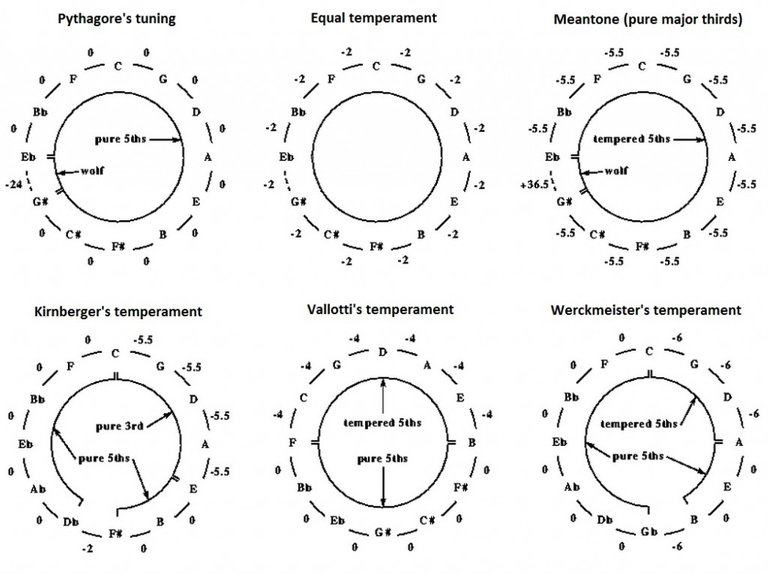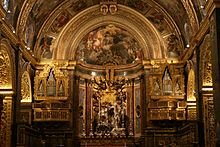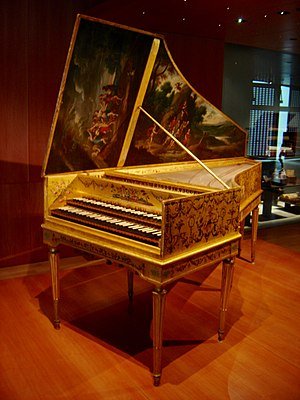This article is meant as a short overview of what is meant and intended by the specialisation of Early Music. We do intend to produce further articles that will explore specific features in greater depth. Mostly, we will show changes in the other fields that highlight the need for a re-examination of the way we approach the performance of music from the past.
Often, it is not realised by the regular classical music audience (of all types orchestra, chamber, ballet or opera) that although the music that they listen to is generally up to 400 years old, that the interpretation of such pieces is done through very modern lenses and techniques. Until relatively recently (within the last handful of decades), this was not a problem, despite the fact that we had access to writings and original manuscripts that suggested that the modern interpretation of such old works were often violently at odds with the original intent.
Over 400 years (or even 100 years), it is an odd position to suggest that nothing has changed to affect the interpretation of music. Nothing stands still for that length of time, and this is especially true in the artistic fields. For instance, think about the music of even a single decade ago. It is a completely different style and taste, and in some respects somewhat embarassingly so.
Evolution of Meaning
This section is meant more as an example of how much things have changed over the centuries, in order to lay the groundwork for the arguement that music has also evolved drastically.
Language has evolved over time, for instance:
"Awful" used to mean "in awe of something"
"girl" used to mean "a young person of either sex"
"naughty" used to mean "you had nothing (naught)"
"pretty" was "cunning or tricky".
If the meaning of words can change so much over the centuries, it is not such a strange idea that musical meanings could also change. More information about the changing of word meanings can be found on this TED talk.
Evolution of Taste
The era of the Baroque was one that had many wars and the hardships of everyday life were much more visceral than what we experience in the modern Western world. The sanitised version of the past came with the era of Romanticism. Here is an example from the work of the painter Rubens to illustrate the idea of what as considered acceptable artistic topics at the time.

Rape of the Daughters of Leucippus
Likewise, the taste of what was considered a good sound and delivery in music has changed dramatically. Modern Classical music places an emphasis on consistently beautiful sound production, whereas Early Music places the emphasis on the dramatic rhetoric of speech. So, in principle a modern singer/instrumentalist should play with a good core of continuous sound and richness of tone. However, an Early Music singer/instruemtalist should be aiming to replicate speech, with all it's variety of good and bad tone, pauses and tempo changes. Keep in mind that this is a generalisation, and that these areas are where each specialisation places it's emphasis only.
The High Baroque altar of Saint John's Co-Cathedral
The architecture of the time was ornate. However, that ornateness had to emphasis and display the underlying simpler structure. Likewise, the Baroque music was full of improvisation and ornamentation, with the warning that such displays were there to highlight and bring out the underlying affect of the music.
Evoution of Ideas
Many of the ideas from the Baroque era did not last through to the modern age. For instance, the idea that certain keys had certain characters (affects) derived in part from the unequal tuning of the semitones (temperaments) for the instruments. Thus, certain keys either sounded relatively consanant (good) or horrifically dissonant (painful!). However, by the close of the Classical era, this "problem" was solved, and all the keys gained an equal footing and thus it was not really possible to distinguish any true difference between them.

Evolution of Equipment/Technique

Photo by @bengy
Even the equipment of the time has evolved. The predecessor to the modern piano was the pianoforte, which was preceeded by the harpsichord (there are many other cousins as well!). Stringed instruments were made differently, had strings of pure gut, didn't have support structures and were held differently. Wind and brass instruments had no keys or valves and thus were controlled purely by the force of the player and not by any mechanical means. Many instruments (such as the viola d'amore and viola da gamba) died out completely.

All of this led to different methods of sound production, and also shaped the techniques and demands of the compositions of the day. Certain techniques were easier on the original instruments, whilst certain other techniques are favoured on today's Classical instruments.
Conclusion
This was just a quick trip through the many things that have changed throughout the history of "classical" music. The founders of our "revolution" saw the odd nature of interpreting old compositions through the lens of modern tastes and ideals. They understood that this was a corruption of the original intent and meaning of the composers, and thus they took it upon themselves to educate themselves through scholarship and study of orignal sources. We are now several waves into the re-awakening, and now we are using the study of our forebears to inform our ongoing attempts to entertain and educate our audiences!

Running an ensemble is a rewarding but time consuming job. Chasing after grants and sponsorship is the often overlooked but important aspect of a musician's life. If our post has passed the reward period, please consider a donation or a delegation. We also accept tokens of support at the following addresses:
BTC
1Mwe6XaDcREa7o5RSLGoWfk9wSwGs6LkSA
LTC
LPcEtTsxMJykDeK713jsj3e2BsdVf32ix7
ETH
0x1bb1d830f66bdb74de45685a851c42b790587a52
Doge
DMJNS7jbNCgPdFdxgeFdEummFMmSQvAoK2
Musicoin
0x9c1fc741f0869115f8c683dc6967131ab1c40ebc
Thanks for you support!
Please let any classical musicians or classical music lovers that you know to subscribe to @classical-music, and to start using the #classical-music hashtag, so we can try and grow our community! Join us at our Dischord: https://discord.gg/ppVmmgt


Thank you very much for calling attention to the 'earlier' music. Over the years I've taught several undergraduate 'music history and appreciation' courses, and have always felt that our music majors have been somewhat short-changed by the neglect of most of the music (and instruments!) of the pre-Baroque style periods. Very nice presentation!
Thank you, I really have to badger our artistic director to release his writing or better still, write a post or two. He is much better than I at this sort of thing. He has much more scholarship, I prefer the performance!
@monadnock, join the classical music dischord! https://discord.gg/ppVmmgt
okay, I joined it. Look for me as PureMusic there.
Great post! You should also cite your images. You can put the image source either under the picture or at the bottom of the post.
If the image is yours, you can have a disclaimer saying the image is original content.
Method of citing images:
[Enter comment here](Link to website where image was obtained here)
Best of luck on here!
Congratulations, you have been upvoted and resteemed as part of #newbieresteemday's top 10 posts for the day!
Thans! I will get to work on getting the citing fixed.
What a wonderfully written post! I'm reminded of sitting in art class in college, but much more interesting.
Music is much more interesting than art! 😁
I know, but since I can't at this very moment put on some earphones to enjoy the music, I have to enjoy the visual 'art' of music. :)
If you believe this post is spam or abuse, please report it to our DiscordYou got a 2.64% upvote from @buildawhale courtesy of @musicapoetica! #abuse channel.
If you want to support our Curation Digest or our Spam & Abuse prevention efforts, please vote @themarkymark as witness.